The New York Rangers’ approach to the trade deadline could perhaps be summed up by three words at this point: “We’re not sure.”
It’s just too early for the rebuilding Blueshirts to decide whether to engage in a third straight deadline selloff. Coach David Quinn would desperately like to get his youthful group the experience of a playoff series, and with the club six points out of the second Eastern Conference wild-card spot through Thursday after four wins in its last five games – albeit with four teams to leapfrog in order to capture it – the tantalizing possibility exists.
There are bigger questions than just whether to go for it this season, though. On one hand, do the Rangers want to deal away veterans yet again, sending the message to the younger players that playoff contention may still lie years away? More importantly, though – can several key players be re-signed given the team’s salary cap situation next season?
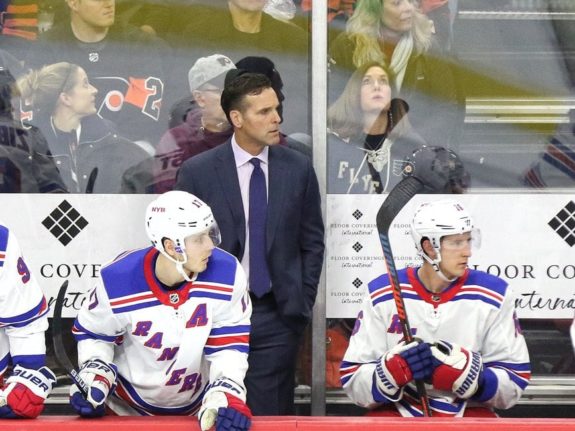
The short answer to the second query is, no, not all of them. And so general manager Jeff Gorton is bound to face tough decisions on four veterans with expiring contracts and one young goaltender before Feb. 24 whether the Rangers are in contention or not.
Here’s a look at the Big Five whom Gorton has to decide whether to trade, re-sign or simply keep to play out the season in the next five weeks:
Chris Kreider
The speculation over whether No. 20 will be traded or remain with the only NHL team he’s ever known has gone well past the point of exhaustion, the long-term fate of the power forward now into its second season of uncertainty. The Rangers tried to trade the impending unrestricted free agent last offseason, didn’t find a deal they liked and committed to keeping him into 2019-20, without an extension or any real effort to secure one.
That’s why it seems as if the club is still likely to send Kreider away. Theme alert: There are no apparent discussions taking place between Gorton and Kreider’s representatives. As with the case of departed center Kevin Hayes, the Rangers just don’t seem excited over the possibility of committing long term to Kreider, who will probably command a Hayes-like contract to stay: Seven years, $49 million or thereabouts.
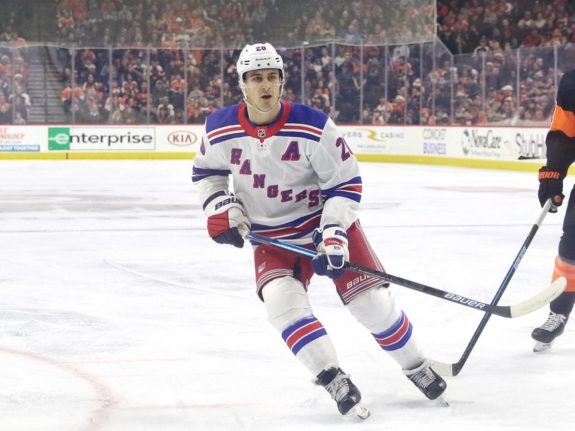
It’s all been said before: Kreider is a unique talent and a leader whose departure would be prominently felt in the rush, in front of the net and in the dressing room. With 16 goals and 15 assists, he’s having a strong season.
Yet the Rangers have seen this aplenty, the notoriously streaky scorer putting up big numbers for a stretch only to seemingly disappear for a longer span. Kreider has recorded 10 goals and 8 assists in his past 18 games, including the winning tally on the power play with 24.6 seconds left in the Rangers’ 3-2 win over the New York Islanders on Thursday. How long will that level of production continue?
Kreider’s surge and solid 2019-20 might finally give the Rangers a chance to find the type of deal they feel is commensurate with his value on the trade market. Kreider’s mix of size, speed and power will be highly valued in the playoffs, and thus, could possibly result in a bidding war in which the Rangers could obtain an above-market return of draft picks and/or prospects. It’s what the club hoped for at the 2019 deadline, but failed to materialize. Will the Blueshirts, though, roll the dice and keep him past the deadline if they’re close to a playoff berth – or engage in hurried negotiations to secure an 11th-hour contract agreement?
Here’s betting no. The front office doesn’t want to miss out on a potentially significant trade haul, and it’s clearly worried over what the back end of a long-term extension for Kreider would look like. With nearly $66 million in salary already committed for 2020-21 and the cap unlikely to rise much next season, as usual, Kreider is a luxury that the Rangers simply may not be able to afford.
Verdict: Trade
Ryan Strome
The forward continues to twist the knife in the Edmonton Oilers, who sent him to the Rangers for Ryan Spooner in Nov. 2018 in what was seen at the time as a swap of bad contracts. Strome has revived his career in a season-plus on Broadway and has been especially effective in 2019-20, finding easy chemistry centering the electric Artemi Panarin. Strome’s 42 points are second on the team, and he’s provided depth and needed stability at center. At 26, the fifth overall pick in the 2011 draft may be finally finding his game with his third team.
Gorton, though, surely is aware that Strome has one of the best jobs in the league right now. Panarin’s brilliant playmaking and ability to break down a defense has at times required his linemates to do little more than keep their sticks on the ice and stay within a reasonable distance of the net to score easy goals. There’s hardly a question that Strome’s numbers have been inflated by riding shotgun with Panarin. That could spell danger this offseason when Strome, set to be a restricted free agent with arbitration rights, seeks his next deal – whether through arbitration or in the form of a longer-term contract.
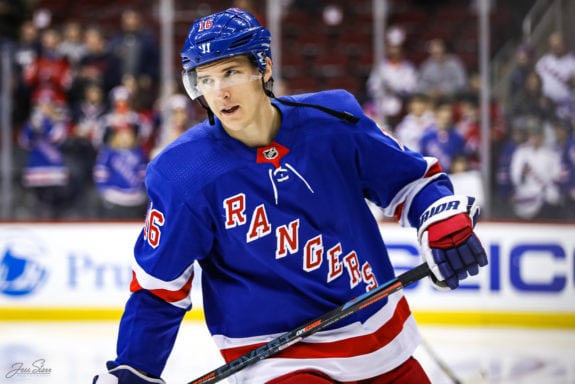
For Panarin’s part, he hardly has issues with adjusting to different linemates: He’s (somehow) on his third team, yet has never recorded fewer than 74 points in his four full seasons. He’s on pace to exceed 100 for the first time in his career with Strome and defensive forward Jesper Fast on his line.
In short, Panarin’s production has never depended on who he’s played with. It’s, of course, possible that Strome and Fast have been the key to Panarin’s best season; are the Rangers willing to bet, say, around $4-5 million per season of cap space for multiple years on Strome to find out?
Strome may fall under the Kreider category: A luxury that the Rangers simply can’t afford to keep. With Filip Chytil making steady progress and the club still holding high hopes for fellow young center Brett Howden, the Rangers theoretically have cheaper alternatives down the middle behind Mika Zibanejad. Strome was initially acquired as something of a placeholder, and committing to him as a part of the future could prove short-sighted – and expensive.
Verdict: Trade
Alexandar Georgiev
After a rough three-game stretch in which he allowed 16 goals, the third-year netminder has re-established his value in his most recent three starts, going 2-1-0 while allowing two goals in each. His characteristic poise, which seemed to desert him at times during the ugly three-game stretch, was evident in back-to-back victories over the New York Islanders on Monday and Thursday in which the soon-to-be restricted free agent made a combined 70 saves.

Though the Rangers need to be sure they aren’t trading the wrong young goalie, it appears that the club is resigned to dealing Georgiev to alleviate their untenable three-man glut in the net. Henrik Lundqvist probably isn’t going anywhere for at least one more season and rookie Igor Shesterkin, the designated heir apparent to The King, looked good in his first two games after being called up Jan. 6. Georgiev could draw a nice return, with several contenders needing an upgrade in goal and other teams looking for a long-term solution. Like Kreider, Georgiev should be a sought-after commodity next month, and it’s probably time for the Rangers to swallow hard and take advantage of the trade deadline’s tendency to inflate players’ value.
Verdict: Trade
Jesper Fast
The beloved career Ranger is set to become an unrestricted free agent at season’s end. The idea of the significantly underrated, heart-and-soul two-way forward leaving won’t play well in the dressing room – or amongst the fanbase, for that matter – but there’s no denying the versatile Fast has value as a rental for a playoff team. He kills penalties, scores (8 goals and 12 assists) and generally makes his team better when on the ice (career-high plus-16, though again, playing with Panarin certainly helps that stat). Trading him would be painful – but so would be losing him for nothing July 1.
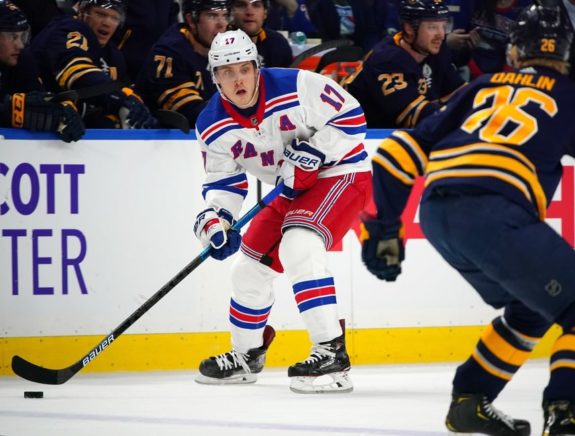
Fast’s importance to the Blueshirts has always been overlooked. This might be one instance where management rolls the dice and hopes he’ll want to stay on – perhaps for less than another club might end up offering.
Verdict: Keep, hope to re-sign in offseason
Tony DeAngelo
This looms as the Rangers’ toughest potential offseason decision. Apparently, on his way to putting the maturity issues that have plagued his career behind him, the 24-year-old defenseman has 12 goals and 25 assists, placing him on a 60-point pace. His quickness out of his own end and mobility at the top of the offensive zone have played an integral part in the overhaul of the club’s blue line, now a mobile, attack-focused unit that’s been among the biggest early success stories of the Blueshirts’ reconstruction project.
DeAngelo’s work in the defensive zone has also improved. The problem? Money, of course. The pending restricted free agent has played his way past any sort of bridge deal, now likely to command a contract worth perhaps $6 million per season over five years. DeAngelo also probably won’t be in the mood to offer a hometown discount after having to settle for a one-year, $925,000 contract for 2019-20. It’s time for him to get paid.
DeAngelo’s status is of course tied to those of Kreider, Strome and Fast. If the Rangers prioritize DeAngelo by moving some or all of those three, they can find the cap space. Giving long-term deals to one or two of the forwards – not to mention winger Brendan Lemieux, who the club wants to keep and is due for a bridge deal – could make DeAngelo unaffordable.
Although the idea of trading away someone with DeAngelo’s skill set and potential seems incomprehensible, a case can be made to do it. While he’s been better in the D-zone this season, he’ll probably never be confused with a shutdown defender. The maturity problem, which did resurface briefly early this season, could rear its head yet again. The return on DeAngelo would be significant, with the Blueshirts perhaps able to bring back a young power forward, a dimension for which they have a desperate need. Plus, Nils Lundqvist – like DeAngelo, a right-handed defenseman – turned in an impressive World Junior Championship performance, and the 28th pick in the 2018 draft should be on his way to the Rangers soon.
That said, the Rangers should probably choose to keep DeAngelo over Kreider, Strome and Fast if it comes to that. He’s been the Rangers’ best player not named Panarin or Mika Zibanejad in 2019-20, and the power play’s newfound lethality – it was ranked 11th overall through Thursday’s games and has gone 10-for-29 over the past 10 – has as much to do with him as anyone else.
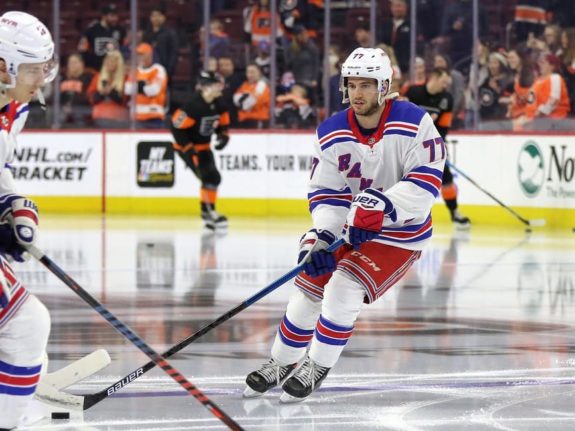
Perhaps most impressively, DeAngelo’s rise has made his June 2017 acquisition as part of the Derek Stepan-Antti Raanta trade with the Arizona Coyotes look pretty good for the Rangers – quite a feat considering the Blueshirts’ supposed main asset obtained in the deal, the seventh overall draft pick in 2017, might be a bust in the form of the selection of Lias Andersson. Are there a lot of NHL GMs who wouldn’t do that deal again today, even with the misfire on the No. 7 pick?
DeAngelo is comfortable playing both sides on defense. He drives offense on the power play as well as at even strength. His play in his own end seems to be getting better, albeit incrementally. And he just might finally be outgrowing the mistakes of youth that imperiled his career early on. This one seems like a no-brainer – unless someone like, say, Ottawa Senators forward Brady Tkachuk is coming back the other way.
Verdict: Sign
Gorton certainly wishes the choice of whether to engage in another round of deadline deals or to keep everyone in a drive for the postseason will be an easy one. He could end up walking both paths – trading some and keeping some. Should the club remain within striking distance of a playoff spot until late next month, though, it won’t be an easy call – which would leave the GM with one of the toughest decisions of his tenure on Broadway.